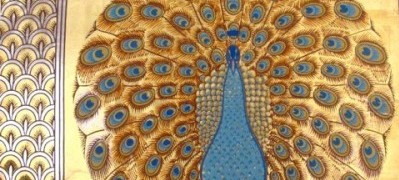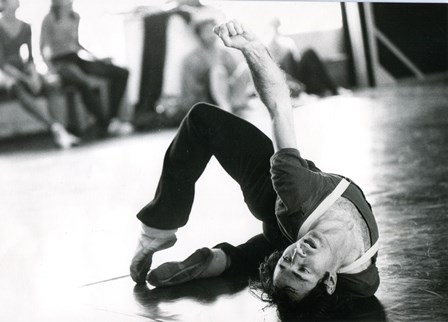What links a springboard , a sonnet, a commode, a peacock, many hairpins and a sad lack of teleportation facilities? Read on to find out:

A glorious piece of design history held at The National Archives, catalogue reference: BT 43/102/319345
Way back in December 2012, when the world was young, I was pleased to introduce on this blog a new arts archives initiative, supported by The National Archives and Arts Council England. We called it Archiving the Arts. Since then, we’ve checked in with the project a couple of times – hearing about its development last spring and about one workshop held here at Kew to engage artists with the archive.
Now the initial project phase is drawing to a close, I met up with Archiving the Arts’ Kate Wheeler and Louise Piffero to find out more about their work. Despite us all being distracted by Kate’s Pre-Raphaelite hair, which eats hairpins and was trying to escape throughout this interview, I’ve got much to report.
Tell me what you’ll remember about your work on this project – what are the things you’ll take away?
Kate: Above all, the positive memories of the people we work with, their will and ability to take on challenges and make improvements. It has been joyful to go into places, knowing that we can answer their questions and help them to progress.
Louise: People who hold arts archives know they have something of great value, but not always how they can best work with it. We’ve been with them at the start of their archive journey, full of possibilities. We’re the springboard for their future archive, if you like.
Kate: We often have to tell organisations just how exciting their records are. It’s quite easy to be thrilled by an autograph book full of famous actors’ signatures. But to have a complete run of student records for a drama school, which exist nowhere else, and which contain information which is entirely unique, isn’t always recognised as exciting by that school – it’s just ‘the files’. But we can bring that excitement!
Although if you want one specific thing I’ll remember, it’s that the Royal Albert Hall has Queen Victoria’s special commode. Sometimes, it’s the toilets that really stick in your mind.
After years of supporting collaborative work, do you have any top tips for artists in the archive?
- do use archives – you’re absolutely allowed, indeed welcome, to use archive collections in your practice
- talk to people: archivists are incredibly helpful, and knowledgeable
- be specific if you can – it’s easier to help someone to find out about ‘cholera on my street in the 1860s’ than ‘something about sickness’
- if you can’t be specific at the start, use conversations to drill down to where you can
- the materiality of archives can be an inspiration, as well as the content: how does leather age? Which parts of this book are grubbiest – and so were probably most popular?
- don’t be afraid of not knowing things about how archives work – all can be explained
- archives weren’t created with you in mind. They are (mostly) records of reality. Real life is chaotic, so you never know what will turn up on the next page.
- archives work can be a bit like writing a sonnet. Unlike in the rest of life, there are strict rules (on display, in most archives), but within that framework there is life, in infinite variety.
And top tips for archives and archivists working with arts organisations and artists?
- art doesn’t necessarily come from a research question. Serendipity and inspiration can’t always be found through Boolean searching.
- a digital surrogate often doesn’t get it done for creativity: the object as well as the information has value
- don’t be frightened to talk with and talk back to artists, especially those working closely with your collections. Value what knowledge and expertise you can bring to their work
- the finished artwork isn’t necessarily the most important thing for you as an archive service. A huge benefit of working with artists is getting a new eye on your collections, service and users. Be prepared to change as a result!
Given that time and space are pretty much infinite, and Archiving the Arts has only run for about 30 months, what haven’t you had a chance to do in that time?
Louise: We were a bit more restricted in our geographical coverage than we had wanted, especially outside of England. However, we were able to present at the Scottish Records Association’s Artists in the Archives conference, the Copyright and Heritage 2.0conference in Edinburgh, and meet with the Group for Literary Archives and Manuscripts at the National Library of Wales in Aberystwyth. We’re also hoping to take part in Performing the Archive at the National University of Ireland Galway in summer 2015. All of these events and discussions provide a really useful foundation for us in engaging with the home nations and Ireland.
Kate: We want to see arts archives growing their networks and supporting each other. It’s much more useful for a new arts organisation looking at archives to talk to someone who has been through the experience they’re just starting on, than to talk to me (although I am splendid). The National Archives can make connections, and support relationship building, but we don’t have to be the hub for all these conversations. That said, we’re looking at opportunities in the future to keep up face to face networking, perhaps through an annual event, because sometimes it’s just very helpful to get people in a room together to share ideas.
Louise: So, what we really needed to get everything done was a teleport. And also some kind of thought transference process, to make it easier to share ideas. But even without these basic necessities, we have still engaged with over 240 organisations, groups and individuals across the arts and archive sectors, advising on best practice, collaboration and funding sources. If the process, we added information on 196 archive collections to Discovery.
What are your hopes and ambitions for arts archives in future?

Rambert Dance Company Archives contains inspirational images of past performance, and much more. With permission of Rambert Dance Company.
Kate: I’d like more arts organisations and practitioners to know that they have an archive! And to encourage them to engage with it. During the project, we’ve seen how arts organisations often have an issue engaging with their heritage, because they are so future driven. I’d love to see more places engage with their archive in the way that Rambert Dance Company has, using it day-to-day to enrich practice. Heritage can mean a huge amount to arts audiences.
Arts archives are also a great way to grow and diversify the audience for archives. When someone might not be excited by researching their family history – perhaps because it mostly lies overseas – they might well still be thrilled by the archives of EastEnders or JRR Tolkien, part of a shared cultural experience. I’d love to see more writers engaged actively with archives too – fiction writers, especially. They can do so much to open up collections, and to find inspiration in the raw materials of the human past.
Arts archives matter so much to people, to individuals and to society. The more our records become digital, the further we will get from the marvel of the object that you can touch. Arts practice can bring back some of that joy, and the sense of occasion and wonder you can get from encountering the past.